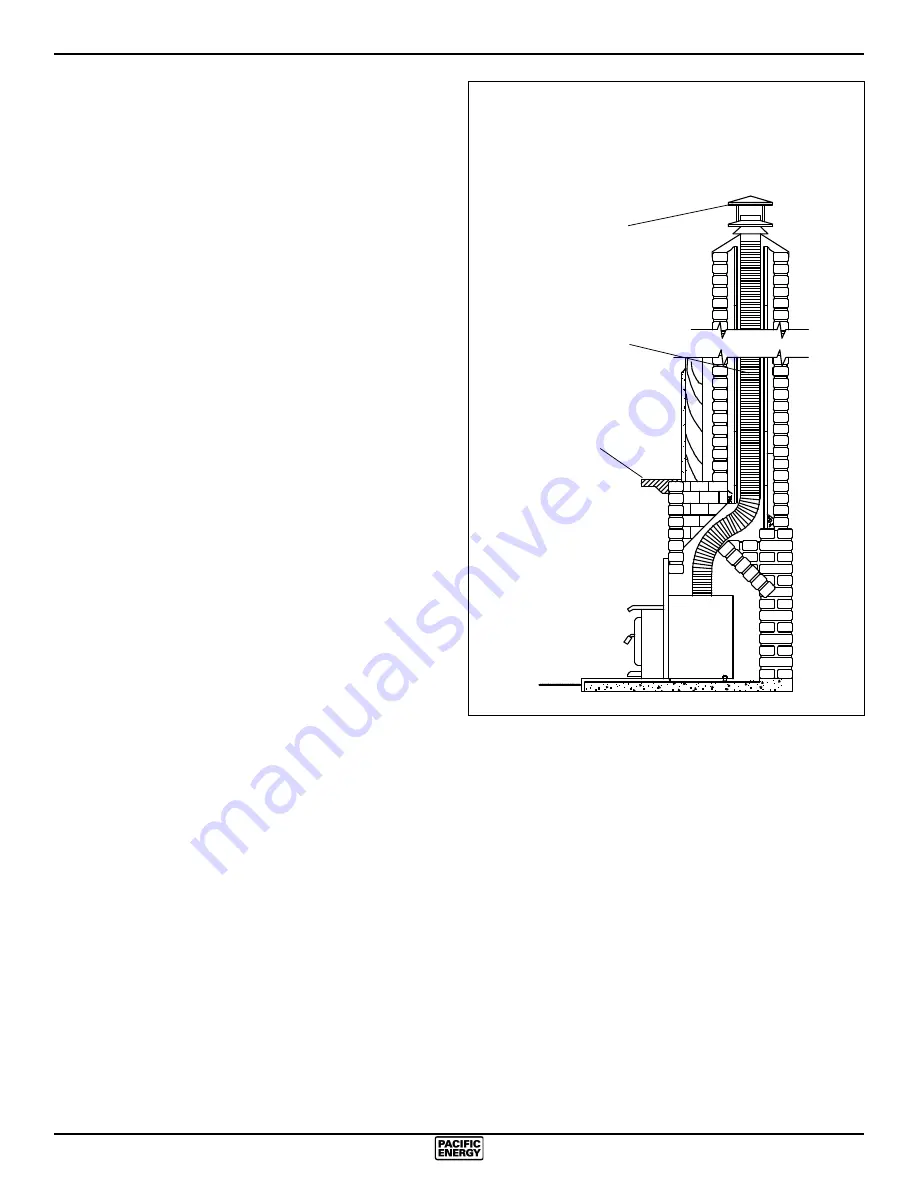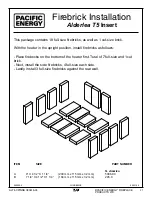
7
ALT5.CPINSB 080515-24
©PACIFIC ENERGY FIREPLACE
PRODUCTS LTD.
Installation
Your Insert is designed to be installed into a masonry or factory-
built, zero-clearance wood burning fi replace. The masonry
fi replace must be built according to the requirements of the
Standard of Chimneys, Fireplaces, Vents and Solid Fuel Burning
appliances, N.F.P.A. 211 (Latest Edition) or applicable National,
Provincial, State or local codes. The installation shall conform
to CAN/CSA-B365, Installation Code for Solid-Fuel-Burning
Appliances and Equipment. The factory-built, zero-clearance
fi replace and its chimney must be listed per UL 127 or ULC
S610 standards.
Warning: Under no circumstances is this heater to be installed
in a makeshift or "temporary" manner.
DO NOT CONNECT THIS UNIT TO A CHIMNEY FLUE SER-
VICING ANOTHER APPLIANCE.
Fireplace Specifi cations
Your fi replace is required to have the following minimum sizes:
WIDTH (at front)
24 1/2" (622 mm)
WIDTH (at rear)
24"
(610 mm)
HEIGHT 21"
(533
mm)
DEPTH
18
1/4"
(464
mm)
Chimney height 15' (minimum)
A metal tag is provided and is to be fastened to the back
wall of the fi replace, if the fi replace has been modifi ed to
accommodate the insert.
Into a Masonry Fireplace
Inspect your fi replace for cracks, loose mortar or other physi-
cal defects. If repairs are required, they should be completed
before installing your insert.
The fi replace chimney must be suitable for wood burning use.
Check for creosote build up or other obstructions, especially
if it has not been in use for some time - have chimney swept.
The existing fi replace damper is to be locked open or removed
completely.
WARNING: Do not remove bricks or mortar from your
existing fi replace.
Exception: Masonry or steel, including the damper plate, may
be removed from the smoke shelf and adjacent damper frame
if necessary to accommodate a chimney liner, provided that
their removal will not weaken the structure of the fi replace and
chimney, and will not reduce protection for combustible materi-
als to less than that required by the National Building Code.
The Insert must be installed in accordance with local and or
national building codes. The two methods of fl ue connection
that are acceptable in most areas are:
Full Flue Liner: (Fig.2) where a stainless steel rigid or fl exible
liner extends from the Insert fl ue collar to the top of the chimney.
Positive Flue Connection(In U.S.A. only): where a throat
blocker plate and a short connector pipe is used.
Note:
A clean-out door may be required under local codes,
when a positive fl ue connection is used. Consult local codes.
Pacifi c Energy highly recommends the use of a full liner
as the safest installation and providing optimum perfor-
mance. When connected to a full liner, the Insert is able to
draft correctly and will prevent problems such as difficult
start-ups and smoking out the door.
For difficult installations, this insert is approved for use
with a SPND.3OFFSETA - 3” fl ue offset box. Only this
offset box is approved for use with this insert. The use
of any other offset box may cause a hazard and/ or void
any warranty.
Rain Cap
Stainless Steel
Rigid or Flex Liner
Fig. # 2
Full Flue Liner
(Required in Canada)
Mantel or
Top Facing








































